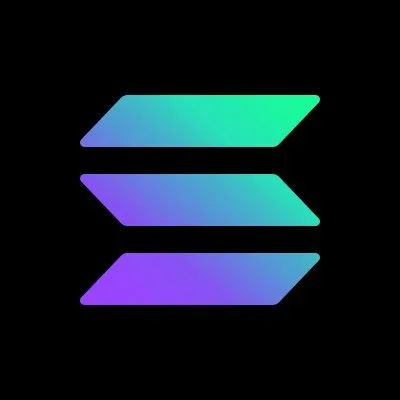Hardware has always been hard.
Niche tech devices have struggled at every turn of the market, yet somehow (we know how)  Solana L1Solana is a high-performance blockchain for fast and affordable transactions.View Profile” class=”stubHighlight”>Solana has managed to sell out their first device and post impressive pre-order numbers for their follow-on effort. It’s a saga that has captured the attention of other crypto market participants who are eager to build out a hardware moat and court new markets.
Solana L1Solana is a high-performance blockchain for fast and affordable transactions.View Profile” class=”stubHighlight”>Solana has managed to sell out their first device and post impressive pre-order numbers for their follow-on effort. It’s a saga that has captured the attention of other crypto market participants who are eager to build out a hardware moat and court new markets.
Today, we’re digging deeper into why crypto smartphones matter. We’re also unpacking the Saga phone saga and whether the device can keep its meme coin-fueled success going and pave the way for other entrants + a suite of mobile-friendly crypto apps.
Let’s dive in 🐶
Why do crypto phones exist?
Crypto phones are purpose-built to cater to the daily onchain activities of a DeFi power user. They come equipped with features that streamline the use of apps and crypto transactions on the phone. Additionally, they serve as wallets for self-custody of user assets (tokens) and digital collectibles (like NFTs).
Crypto phones are not a new concept. They’ve been tried before, and many have failed several times.
In the cycles gone by, early attempts like HTC’s blockchain smartphone and Sirin Labs’s Finney phone failed to gain any meaningful traction. Samsung tried to integrate blockchain wallets into its Galaxy S10 in 2019, but that didn’t take off either.
Looking back, the odds were always against them. The blockchain infra was (and still is) in its early stages of development. The building blocks to develop a high-performance crypto phone were simply not there. Think about it: even today, we’re talking about the broken DeFi UX and a lack of interesting apps in the ecosystem, so it’s hard to imagine what an app store on a crypto phone would look like 6-7 years ago.
Moreover, these niche devices were quite expensive, even when compared to other regular smartphones in the market. The Finney phone came with a hefty $999 price tag, while the HTC Exodus was valued at about 0.15 BTC or 4.78 ETH, which was roughly $960 back then.
With a limited selection of apps on offer and a lack of practical things to use crypto for on the daily, consumers found it hard to justify why they needed a crypto phone in the first place, let alone one at a premium price.
As a result, crypto phones never took off.
But some of these factors have shifted a bit since. The market is now showing an appetite for crypto phones, as reflected in the success story of the Solana Sage phone.
Maybe they finally cracked the code on how to carve out a niche for crypto phones within the ecosystem? But why did the Solana Saga phone succeed where others did not?
Let’s take a closer look.
Solana’s Saga Chapter 1 success
The Solana Saga phone was launched in the middle of a bear market, when most users did not fancy purchasing a crypto phone. The sales were slow early on, languishing around 20-30 units per day, far out from the goal of 20,000 units. Even after a significant 40% price reduction from $1000 to $599 in August 2023, the phone struggled to attract buyers.
Solana is Launching a Phone? | Co-Founders Anatoly & Raj on Bankless
We brought on Co-Founders Anatoly Yakovenko and Raj Gokal to make the case: what’s the deal with the Solana Phone?

However, when the phone launched, 30 million BONK tokens were airdropped to each phone owner. This was part of a broader ecosystem-wide distribution of the BONK token airdrop, which targeted users, developers, and NFT holders within its core demographic.
Saga’s fortunes turned when BONK’s value soared post-Breakpoint in November 2023. As BONK’s price continued to climb, the Solana Saga phone became an attractive purchase. Eventually, the worth of the BONK airdrop surpassed the cost of the phone itself. This led to a remarkable surge in demand, and on December 15, 2023, the Solana Saga phone sold out, with all 15,000 units snapped up in just one day. The frenzy around the phone reached such heights that, at its peak, Solana Saga phones were being resold for as much as $5000 on secondary marketplaces like eBay.
The hype around the Solana Saga phone was further amplified by a series of additional rewards for Saga phone owners announced by various projects, even after the phones had sold out:
The BONK airdrop and the subsequent rewards by other projects for the Saga phone owners made it an exceptionally rewarding experience for the holders.
The phone’s developers are now aiming to replicate that success with the upcoming Solana Mobile Chapter 2, which is set to ship in the first half of 2025. Priced at an even more accessible $450, Chapter 2 is following the same successful incentive playbook as Chapter 1, with the added network effects of a referral system. Many projects, including Solend, Helius, Chads, and Solcial, have already announced airdrops, perks, and giveaways for the owners of the Saga 2.
Remarkably, it has achieved 100,000 pre-sales within just 30 days of its announcement.
Moreover, there’s now a blueprint for other teams and ecosystems to emulate – create cost-effective crypto phones and capitalize on the network effects within an ecosystem.
![]() Aptos L1Aptos is a Layer-1 blockchain with high scalability and institutional backing.View Profile” class=”stubHighlight”>Aptos recently announced its partnership with Jambo Technology to introduce the JamboPhone – a blockchain-integrated smartphone affordably priced at $99, designed for Gen Z users in emerging markets across Africa, Southeast Asia, and Latin America.
Aptos L1Aptos is a Layer-1 blockchain with high scalability and institutional backing.View Profile” class=”stubHighlight”>Aptos recently announced its partnership with Jambo Technology to introduce the JamboPhone – a blockchain-integrated smartphone affordably priced at $99, designed for Gen Z users in emerging markets across Africa, Southeast Asia, and Latin America.
What’s the crypto phone opportunity?
Crypto phones are one of our best shots for scaling crypto to the masses.
As internet access expands globally, a growing number of users are connecting to the world wide web. People are increasingly handling crypto and traditional financial transactions on their smartphones. By enabling access to the DeFi ecosystem via affordable phones, we have a real chance to onboard billions to crypto.
Additionally, crypto-native phones and app stores will be a huge unlock for developers. It will give them access to thousands of DeFi power users and empower them to innovate freely without the challenges of opaque guidelines and fees associated with marketplaces like Google Play Store or Apple’s App Store.
Moreover, in the grand scheme of things, one can look at crypto phones as tools that put crypto values of freedom, self-custody, and privacy first. They ensure users have control over their assets and digital rights.
Here’s what that means:
- A crypto phone gives the users full control over their assets – crypto phones come with a built-in secure enclave; think of it as a vault inside your phone. It’s where your private keys are safely stored, isolated from the rest of the phone’s activities. This makes it difficult for anyone but you to access your assets or other data. You have complete ownership over your assets, safeguarding your digital property rights. It also means that no central authority can block your transactions or take your funds.
- A crypto phone protects the user’s data – they use encryption to protect personal data, allowing you to send end-to-end encrypted messages onchain. It keeps your account safe from centralized interference and ensures your digital civil rights stay protected.
The adoption of crypto-native phones that put the ethos of crypto first is an extremely positive development for the future of crypto. There’s no doubt that crypto phones have the potential to bring crypto to the mainstream.
One day, we may look back at the BONK airdrop and how it was the event that sparked a shift in the power dynamics of the tech industry. Only time will tell.
The exciting part is that in crypto, nothing is too absurd or audacious to consider.
It’s all possible.
Read More: www.bankless.com









 Bitcoin
Bitcoin  Ethereum
Ethereum  XRP
XRP  Tether
Tether  Solana
Solana  Dogecoin
Dogecoin  USDC
USDC  Cardano
Cardano  Lido Staked Ether
Lido Staked Ether  TRON
TRON  Avalanche
Avalanche  Sui
Sui  Wrapped stETH
Wrapped stETH  Chainlink
Chainlink  Toncoin
Toncoin  Shiba Inu
Shiba Inu  Stellar
Stellar  Wrapped Bitcoin
Wrapped Bitcoin  Hedera
Hedera  Polkadot
Polkadot  WETH
WETH  Bitcoin Cash
Bitcoin Cash  Uniswap
Uniswap  Pepe
Pepe  LEO Token
LEO Token  Hyperliquid
Hyperliquid  Litecoin
Litecoin  Wrapped eETH
Wrapped eETH  NEAR Protocol
NEAR Protocol  Internet Computer
Internet Computer  Ethena USDe
Ethena USDe  USDS
USDS  Aptos
Aptos  Aave
Aave  Mantle
Mantle  Bittensor
Bittensor  POL (ex-MATIC)
POL (ex-MATIC)  Virtuals Protocol
Virtuals Protocol  Cronos
Cronos  Ethereum Classic
Ethereum Classic  Render
Render  Artificial Superintelligence Alliance
Artificial Superintelligence Alliance  MANTRA
MANTRA  Tokenize Xchange
Tokenize Xchange  Arbitrum
Arbitrum  Ethena
Ethena  WhiteBIT Coin
WhiteBIT Coin